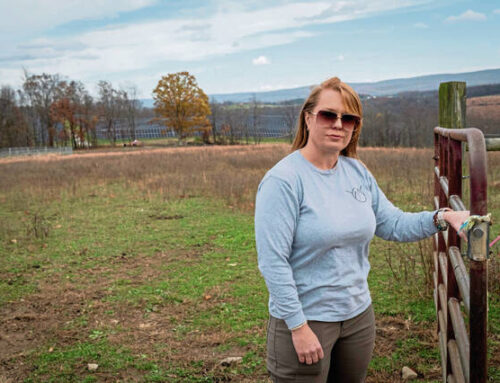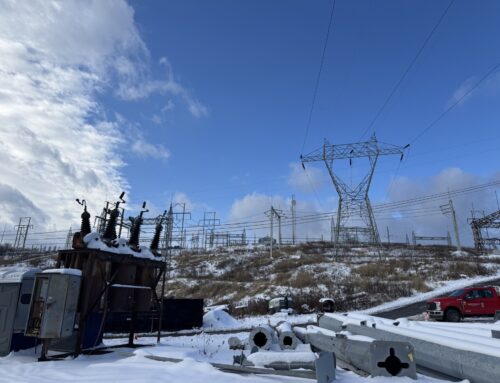NWI group, Sierra Club react to Indiana environmental, public health action
April 20, 2025

As Gov. Mike Braun takes action that he says will improve Hoosier public health, environmental activists believe other action needs to be taken to prove his commitment.
“We’re not looking at the full picture,” said Qiyam Ansari, western Pennsylvania organizer for the Sierra Club. “There’s some fundamental challenges that we have with our farming practices and industry influence. But, to try to single out the food industry and say, ‘This is the sole reason why there’s all these rare illnesses,’ I think is a little disingenuous when there’s known carcinogens that we’re allowed to dump into the environment at thousands of tons per day.”
Braun signed various executive orders in the past couple weeks, including nine as part of the “Make Indiana Healthy Again” initiative. He also signed three executive orders focused on the environment.
The “Make Indiana Healthy Again” executive order actions include overhauling of work requirements for SNAP to fill open jobs; cutting down on “fraud and abuse” of the program by reinstating income and asset verification; aiming to change federal rules so states can operate “high-quality, entrepreneurial SNAP programs; removing candy and soft drinks from SNAP benefits; addressing concerns with possible negative effects of food dyes; creating of a comprehensive study of diet-related chronic illness; increasing access to direct-to-consumer food from local farms; establishing the Governor’s Fitness Test and School Fitness Month; and cutting down on Medicaid program eligibility errors.
“To cherry-pick one industry while you’re allowing the rest of these heavy industries to pollute communities and make America unhealthy is a very dangerous game to play,” Ansari said.
The U.S. Environmental Protection Agency is helping corporations apply for presidential exemptions to sections of the Clean Air Act, which is to advance President Donald Trump’s executive orders, according to the EPA’s website. Exemptions can be extended for up to two additional years and can be renewed.
On April 10, Braun signed three executive orders: one focused on extending the lives of coal plants to meet demand of data centers; another preventing state agencies from factoring in social costs of greenhouse gas emissions; and a final one establishing the Nuclear Indiana Coalition to promote nuclear energy statewide.

This March 4, 2017 file photo shows a hyperboloid cooling tower at the NIPSCO Michigan City Generating Station, a coal- and natural gas-fired power plant, which is set to close by 2028. (Michael Zajakowski / Chicago Tribune)
Susan Thomas, director of policy and press for Just Transition Northwest Indiana, said she’s worried about the state’s environmental health after seeing these executive orders.
“Watch what they do, not what they say,” Thomas said. “This is going to set public health on a downward spiral. It does not make sense, specifically with the data that we now have available to us, and there will be more data coming.”
Thomas is concerned about how the executive orders will impact Northwest Indiana. The one centered around coal plants doesn’t make sense to her because Thomas said coal is not an economically viable solution.
Multiple Northwest Indiana communities have opposed data centers, Thomas said, so she doesn’t want area coal plants to have to support them, such as the NIPSCO’s Michigan City Generating Station.
“We have more coal ash in (Indiana) than any other state,” Thomas said. “This will give us more of that substance, which we don’t need, at a time when we’ve made great strides to address that problem.”
Thomas believes the executive order focused on social costs of greenhouse gases could undermine studies that identified how gases impact public health, such as asthma or high blood pressure prevalence.
“That is truly a setback,” Thomas said. “This is real progress with the data that we can use to really help our communities thrive.”

Thomas is also concerned about nuclear power in Indiana, which state leaders have pushed for. Just Transition Northwest Indiana has opposed House Bill 1007 — authored by Rep. Ed Soliday, R-Valpariso — which would provide a tax liability for expenses related to manufacturing small modular nuclear reactors.
Indiana currently has no nuclear power plants. Small modular nuclear reactors are advanced nuclear reactors that have about one-third generating capacity of traditional nuclear power reactors, according to the International Atomic Energy Agency.
According to Post-Tribune archives, the bill would establish procedures for energy utilities to request from the Indiana Utility Regulatory Commission an expedited generation resource plan to meet customer load growth that exceeds a specific threshold; a generation resource submittal for the acquisition of a specific generation resource in accordance with an approved EGR plan; and a project to serve one or more large load customers.
House Bill 1007 has passed the Indiana Senate and has moved back to the House with amendments, according to the Indiana General Assembly website.
“It will leave us with nuclear waste, which there is no solution for,” Thomas said. “That opens up a national security risk because those sites need to be protected 24/7.”
If Indiana leaders want public health to improve, Thomas encourages them to look at how environmental action impacts health.

“Make America Healthy Again” should look at industrial policy, Ansari said, which he thinks is making people sick.
An October report from Industrious Labs found that most residents in Gary are in the top 10% of U.S. residents most at-risk for developing asthma and at-risk of low life expectancy. A 2016 Journal of the American Medical Association Network report also listed Gary as one of the top five U.S. cities with the lowest life expectancy at one point.
In 2020, Indiana had a lung cancer rate of 72.5 per 100,000 people, with Lake County as one of the state’s counties with the highest cancer mortality rates, according to the American Lung Association. The Indiana General Assembly is currently considering a $2 per pack cigarette tax to generate an estimated $600 million in revenue, which can have the added benefit of reducing smoking rates. The American Lung Association estimates that a 10% increase in the price of cigarettes reduces consumption by about 4% among adults and about 7% among youth.
Ansari is worried about the future of American public health, he said, especially if the environment is not a priority for President Donald Trump’s administration.
“I think this is just creating a very dangerous environment where we’re no longer focused on objective truth, and we are essentially demonizing people based on their ideological beliefs, so long as it’s convenient for the government based on its current needs and strategic priorities,” Ansari said.
Search
RECENT PRESS RELEASES
Related Post






